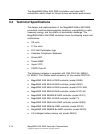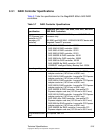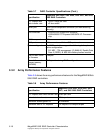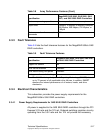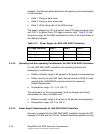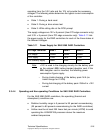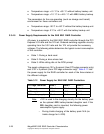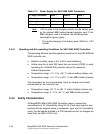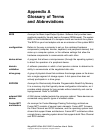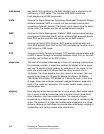A-3
Copyright © 2009 by LSI Corporation. All rights reserved.
peripheral
devices
A piece of hardware (such as a video monitor, drive, printer, or CD-ROM)
used with a computer and under the control of the computer. SCSI
peripherals are controlled through a SAS MegaRAID SAS RAID
controller (host adapter).
PHY The interface required to transmit and receive data packets transferred
across the serial bus.
Each PHY can form one side of the physical link in a connection with a
PHY on a different SATA device. The physical link contains four wires that
form two differential signal pairs. One differential pair transmits signals,
while the other differential pair receives signals. Both differential pairs
operate simultaneously and allow concurrent data transmission in both
the receive and the transmit directions.
RAID Acronym for Redundant Array of Independent Disks (originally
Redundant Array of Inexpensive Disks). An array of multiple independent
drives managed together to yield higher reliability, performance, or both
exceeding that of a single drive. The RAID array appears to the controller
as a single storage unit. I/O is expedited because several drives can be
accessed simultaneously. Redundant RAID levels (RAID levels 1, 5, 6,
10, 50, and 60) provide data protection.
RAID levels A set of techniques applied to drive groups to deliver higher data
availability, performance characteristics, or both to host environments.
Each virtual drive must have a RAID level assigned to it.
SAS Acronym for Serial Attached SCSI. A serial, point-to-point,
enterprise-level device interface that leverages the proven SCSI protocol
set. The SAS interface provides improved performance, simplified
cabling, smaller connections, lower pin count, and lower power
requirements when compared to parallel SCSI. SAS controllers leverage
a common electrical and physical connection interface that is compatible
with Serial ATA. The SAS controllers support the ANSI Serial Attached
SCSI Standard, Version 2.0. In addition, the controller supports the
Serial ATA II (SATA II) protocol defined by the Serial ATA Specification,
Version 1.0a. Supporting both the SAS interface and the SATA II
interface, the SAS controller is a versatile controller that provides the
backbone of both server and high-end workstation environments. Each
port on the SAS RAID controller supports SAS devices, SATA II devices,
or both.




